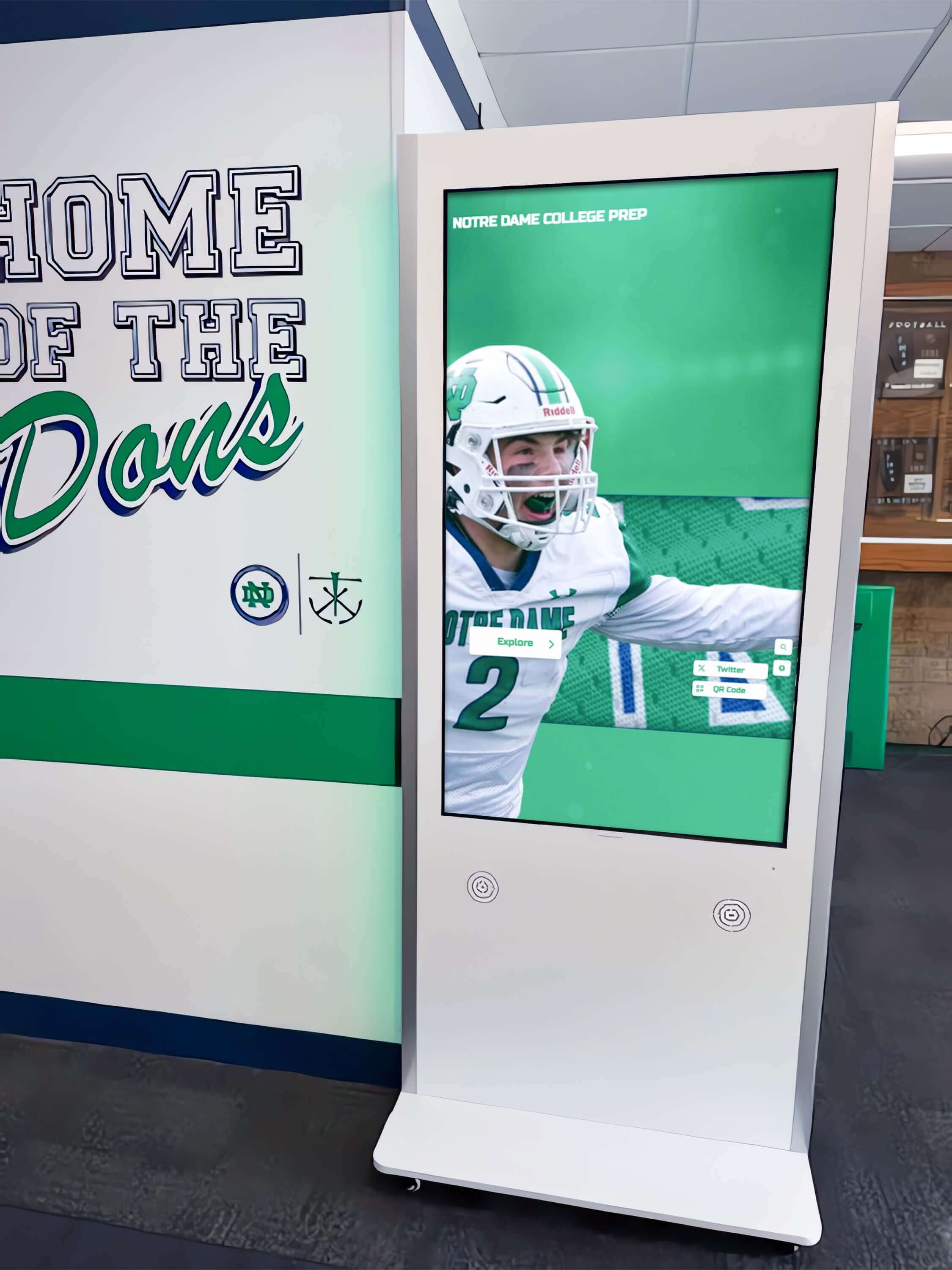Key Takeaways
Discover how interactive touchscreen displays transform Junior Varsity hockey recognition. Complete guide to celebrating JV athletes, building program culture, and inspiring future varsity players.
High school hockey programs succeed through depth—the continuous development of players across multiple levels who progress from inexperienced freshmen to skilled varsity contributors. Junior Varsity teams occupy the crucial middle ground where athletes develop competitive skills, learn program systems, and build confidence preparing them for varsity competition. The quality of JV recognition significantly affects whether athletes remain committed through their development journey or lose motivation and leave programs before reaching their potential.
Why Junior Varsity Hockey Recognition Matters
JV hockey recognition serves strategic purposes extending far beyond simply acknowledging participation. Comprehensive recognition creates tangible benefits affecting player development, program culture, and competitive outcomes.
Building Long-Term Program Depth and Success
Every successful varsity hockey program builds upon strong JV development. Today’s JV players become tomorrow’s varsity stars, and how schools treat JV athletes during their development years directly impacts long-term program success.
When JV players receive meaningful recognition comparable to varsity athletes, they understand their value to the program. This validation strengthens commitment during challenging development periods when improvement feels slow and varsity promotion seems distant. Athletes who feel recognized and appreciated typically remain engaged with programs, while those feeling overlooked or unappreciated often quit before reaching their potential.
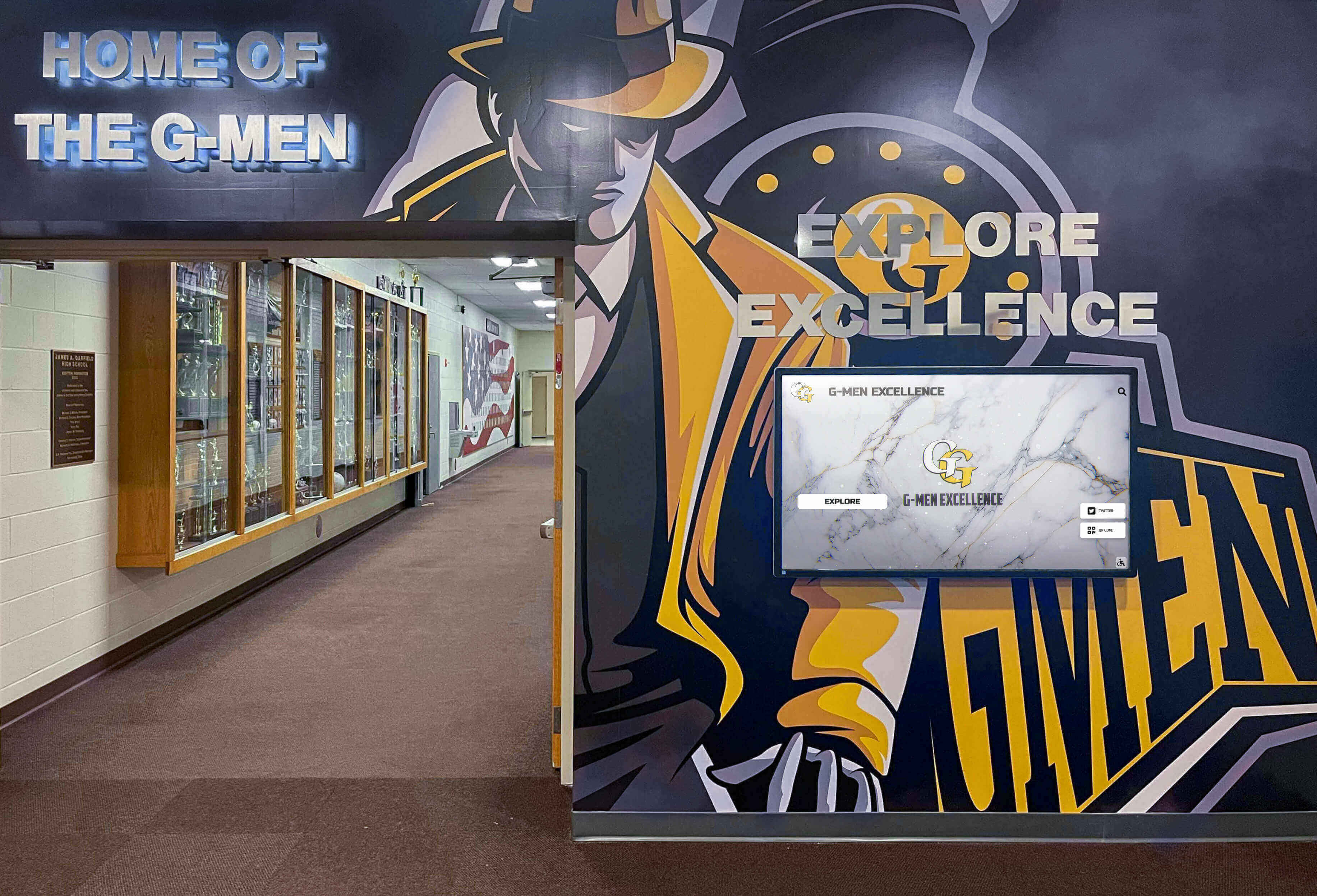
Consider the typical high school hockey player journey. Freshmen begin on JV teams, learning systems and developing fundamental skills. Sophomores compete for JV playing time while working toward varsity consideration. Juniors who remained committed to development often earn varsity positions. Seniors who persevered through JV years become team leaders and key contributors. This progression relies on athletes staying engaged throughout the entire journey—a commitment that recognition significantly influences.
Creating Clear Pathways from JV to Varsity
Interactive displays showcasing JV-to-varsity progression demonstrate achievable pathways for current JV athletes. When players explore recognition systems and discover that current varsity stars began on JV teams just like them, abstract varsity goals become concrete possibilities.
Digital platforms can highlight player development journeys showing JV statistics from athletes who later became varsity contributors, recognizing players who successfully made varsity transitions, documenting improvement trajectories demonstrating realistic development timelines, and celebrating players who maximized their potential through commitment and work ethic.
This transparency creates hope and motivation. JV athletes understand that varsity success doesn’t require being the best player immediately—it demands consistent effort, skill development, and program commitment over multiple seasons. Recognition displays illustrating these pathways inspire current JV athletes to persist through challenges.
Solutions like digital record boards make it easy to track individual and team progressions, providing clear evidence of development pathways that motivate players at all levels.
Demonstrating Institutional Commitment to All Athletes
How schools recognize JV programs communicates institutional values. When JV teams receive recognition comparable to varsity programs, athletes understand that their school values development, effort, and improvement—not just winning and star athletes.
Program Culture Benefits of JV Recognition
- Inclusive environment: Every athlete feels valued regardless of current skill level
- Growth mindset: Emphasis on development over immediate results
- Team cohesion: Stronger connections across program levels
- Reduced attrition: Higher retention rates through development years
- Positive culture: Supportive environment where athletes encourage each other
- Family engagement: Parents appreciate recognition of younger players
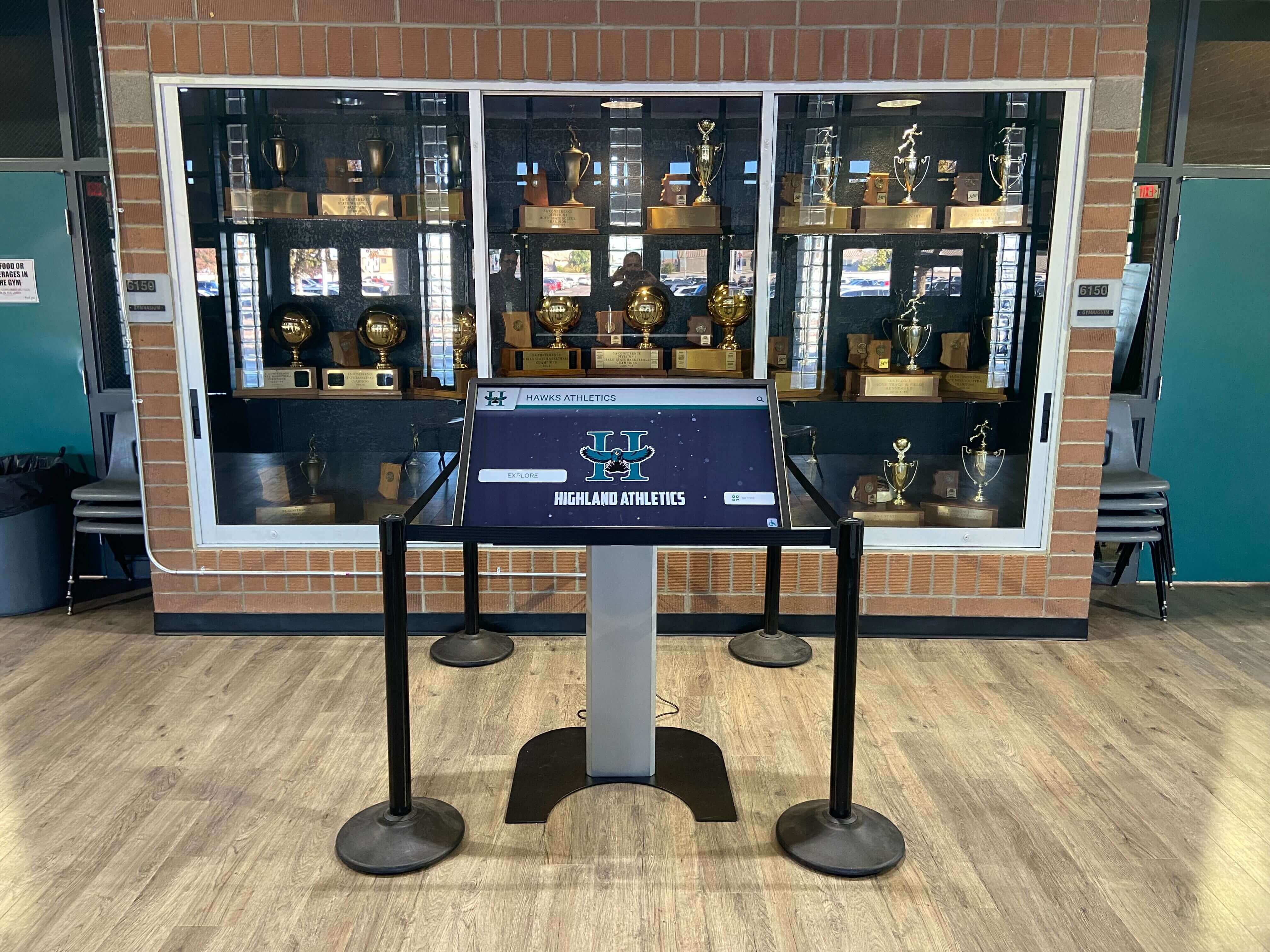
This institutional commitment affects recruitment as well. Prospective players and families evaluate entire programs, not just varsity teams. When they visit campuses and discover comprehensive recognition for all program levels, they understand they’re joining organizations that support development rather than only celebrating finished products.
Preparing Athletes for Varsity Competition
JV hockey serves as preparation ground for varsity competition. Beyond developing physical skills, JV programs teach younger players about program expectations, team culture, and competitive standards. Recognition displays reinforce these lessons by showcasing what varsity success looks like and celebrating JV achievements that align with varsity values.
Interactive displays can highlight program values and characteristics that led to success, recognize JV players who exemplify program culture and work ethic, showcase skill development progression from JV to varsity levels, and celebrate specific improvements that prepared athletes for higher competition.
This educational function helps JV athletes understand what coaches value and what development priorities should guide their training. Clear examples of successful transitions provide roadmaps for current JV players to follow.
Essential Content for Junior Varsity Hockey Recognition Displays
Effective JV hockey recognition requires systematic content development across multiple categories ensuring comprehensive celebration of team and individual achievements.
Team-Level Recognition and Season Highlights
Core JV team documentation preserves season memories while validating team accomplishments:
Season Overview Information:
- Complete roster with player photos, positions, and jersey numbers
- Season record and game results including conference standing
- Team statistics and performance metrics
- Schedule and opponent information
- Coaching staff recognition and program philosophy
- Team goals achieved and milestones reached
- Season narrative highlighting key moments and turning points
Game Highlights and Memorable Moments:
Interactive displays can showcase video highlights from important games, photos from practices and team activities, descriptions of significant victories or close competitions, breakthrough performances by developing players, and moments demonstrating team character and resilience.
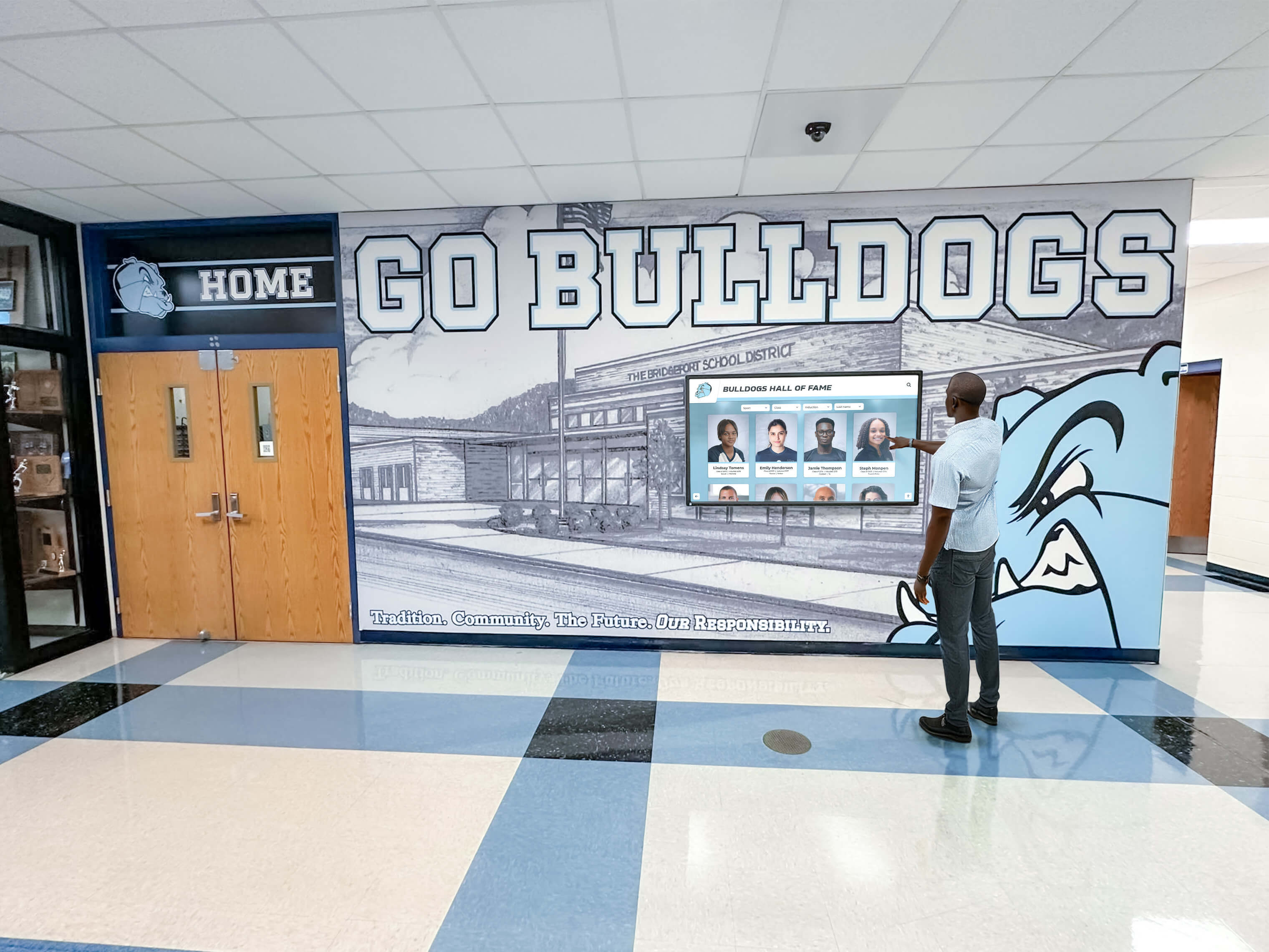
Unlike static team photos that capture single moments, digital displays preserve entire seasons. Years later, alumni can return and relive JV experiences that shaped their development and created lasting friendships.
Conference and League Context:
Providing competitive context helps athletes understand their performance relative to peer programs:
- Conference standings and tournament results
- Recognition received from leagues or conferences
- All-conference selections and individual honors
- Comparison of team statistics to league averages
- Historical program performance and improvement trends
This contextualization celebrates achievements appropriately while identifying areas for continued growth.
Individual Player Recognition and Development
Comprehensive player documentation ensures every JV athlete receives appropriate acknowledgment:
Player Profile Elements:
- Full name, class year, and jersey number
- Position(s) played and role on team
- Individual season statistics and performance metrics
- Notable achievements and memorable moments
- Improvements demonstrated throughout season
- Leadership contributions and team citizenship
- Academic recognition and scholar-athlete status
- Personal quotes or reflections about season experience
- Action photos from games and practices
Recognizing every player—top scorers and defensive specialists, regular contributors and limited playing time athletes, upperclassmen and freshmen—creates inclusive recognition demonstrating that JV teams succeed through complete roster contributions.
Development Milestones:
Tracking individual improvement creates powerful motivation:
- Skills mastered during the season (skating, shooting, defensive positioning)
- Physical development gains (strength, speed, endurance)
- Hockey IQ improvements (understanding systems, reading plays)
- Leadership growth and increased vocal presence
- First goals, assists, or other personal achievements
- Overcoming injuries or obstacles
- Work ethic recognition and practice performance
These development-focused recognitions emphasize growth over current ability, reinforcing that consistent effort produces results over time. Many programs feature athletic history displays that celebrate player journeys from beginners to accomplished athletes.
JV-to-Varsity Promotion History
One of the most motivating content categories showcases JV athletes who earned varsity positions:
Promotion Recognition:
- List of players promoted from JV to varsity each season
- Timeline showing when promotions typically occur (mid-season, following season)
- Player testimonials about transition experience
- Statistics comparing JV and varsity performance
- Photos showing athletes in both JV and varsity uniforms
- Success stories of players who became varsity stars after JV development
This content proves that varsity success follows JV commitment and development. Current JV athletes see concrete examples of players who followed the same path they’re on, making varsity goals feel achievable rather than impossible.
Multi-Year Development Narratives:
For players who spent multiple seasons on JV before varsity promotion, detailed narratives can document:
- Year-by-year statistical progression and skill development
- Specific areas where players improved most significantly
- Challenges overcome during development period
- Coaching insights about development process
- Player reflections on lessons learned through JV experience
- Impact players made after reaching varsity level
These comprehensive development stories become case studies demonstrating that patience and persistence produce results.
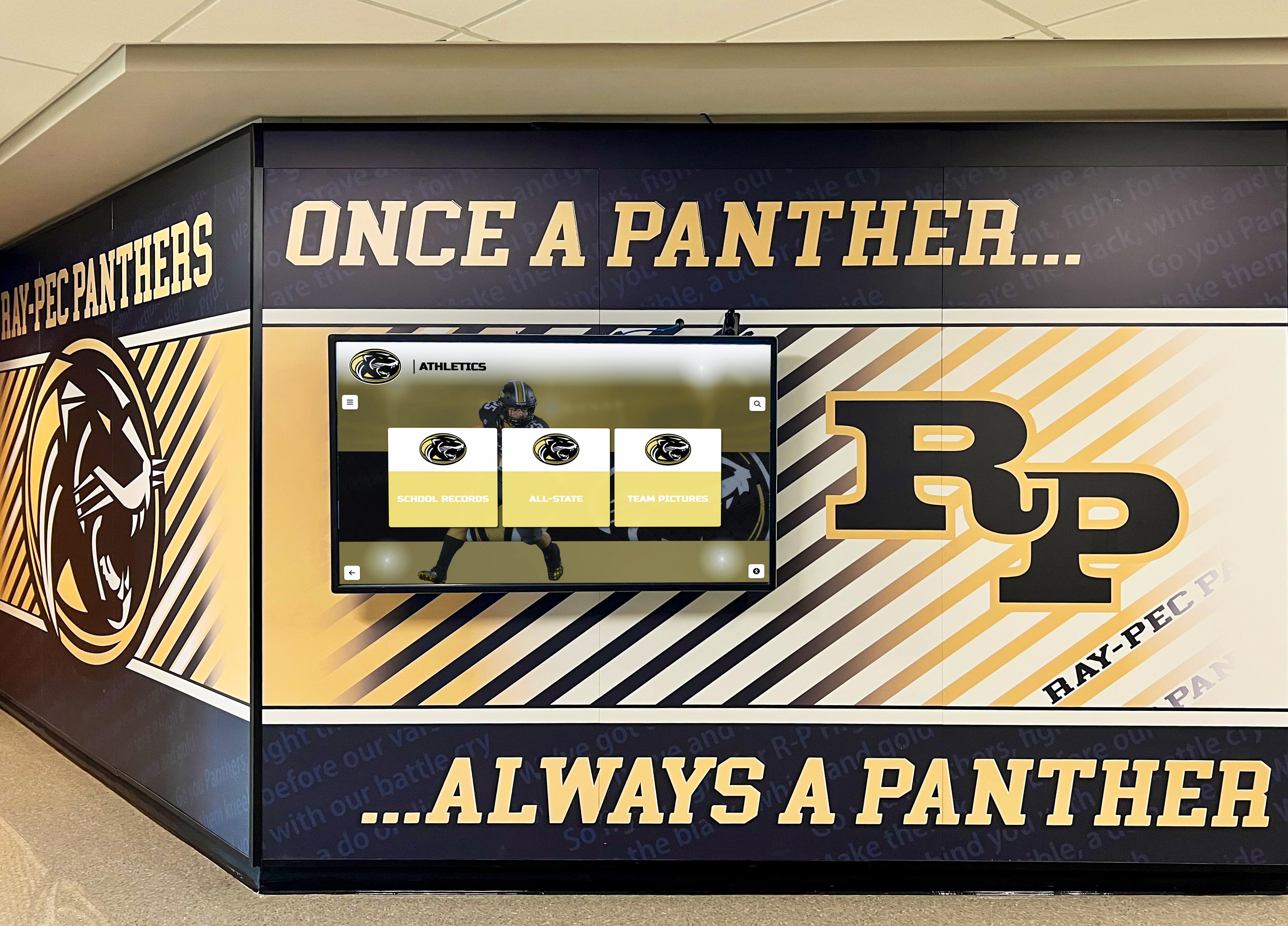
Coaching Philosophy and Program Building
JV recognition should celebrate coaching contributions to player development:
Coaching Staff Recognition:
- Head JV coach biographical information and coaching philosophy
- Assistant coaches and specialized instruction (goalie coaches, skills coaches)
- Coaching experience and background
- Development approach and training methodology
- Player testimonials about coaching impact
- Season reflections and goals for program growth
Program Development Initiatives:
Highlighting program improvements demonstrates continuous growth:
- New training methods or technologies implemented
- Facility enhancements or equipment upgrades
- Community engagement activities and off-ice team building
- Academic support and scholar-athlete emphasis
- Partnerships with youth hockey programs for pipeline development
- Alumni engagement connecting former players with current teams
This documentation preserves institutional memory about how JV programs evolve over time, providing historical context for current and future athletes.
Interactive Touchscreen Technology for JV Hockey Programs
Modern interactive displays overcome limitations that prevent traditional recognition approaches from adequately celebrating JV programs.
Unlimited Recognition Capacity
Physical trophy cases and wall space constrain traditional JV recognition. Schools often dedicate most display space to varsity achievements, leaving JV programs with minimal recognition—perhaps a single team photo or small trophy case section.
Digital recognition displays eliminate these space constraints entirely. A single touchscreen can showcase unlimited content about JV hockey programs across multiple seasons without difficult decisions about what to display versus what to remove. Every season receives comprehensive documentation. Every player gets recognized. All achievements from all years remain permanently accessible.
This unlimited capacity proves especially valuable for JV programs because it enables recognition equal in quality and comprehensiveness to varsity displays. JV athletes receive the same detailed profiles, season documentation, and multimedia celebration as varsity players—validating that all athletes matter regardless of current competition level.
Many schools implement showcase championship teams displays that celebrate achievements across all team levels, ensuring JV accomplishments receive equal prominence to varsity championships.
Easy Content Management and Real-Time Updates
Traditional printed team photos or static displays require professional production and installation, creating delays between season completion and recognition. By the time physical displays are updated, seasons feel like distant memories rather than recent accomplishments.
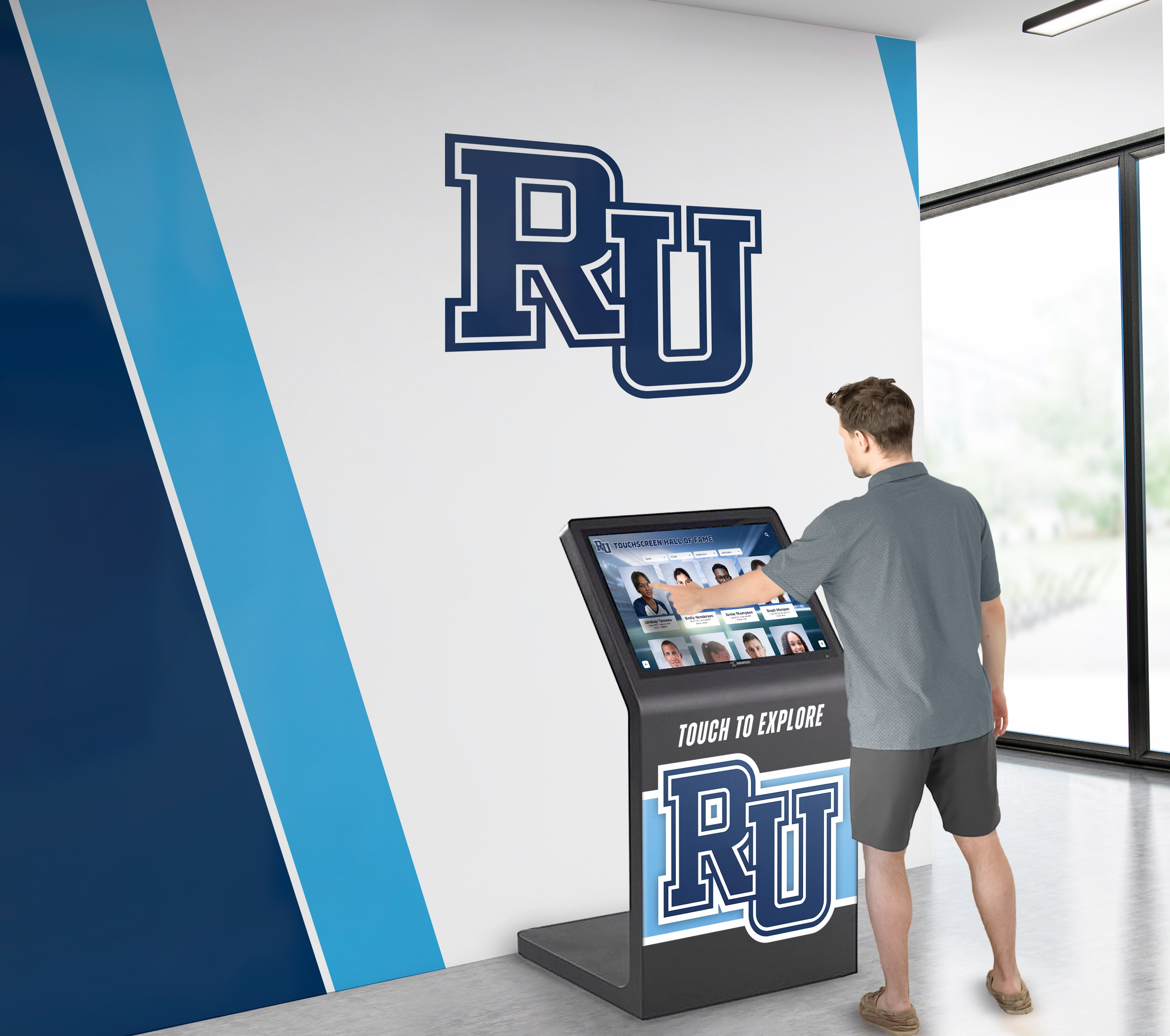
Digital Content Management Benefits
- Immediate updates: Add new content within minutes after games or practices
- Simple interface: No technical expertise required for content changes
- Unlimited revisions: Correct errors or update information anytime
- Scheduled publishing: Prepare content in advance for automatic publication
- Remote management: Update displays from any location with internet access
- Multi-user access: Multiple coaches and administrators can manage content
Interactive touchscreen platforms provide user-friendly content management systems enabling coaches and administrators to update JV recognition immediately. Season-end statistics upload quickly. Photos from the final game appear within days. Player achievements get recognized while excitement remains high rather than months later when impact has faded.
This real-time capability transforms recognition into an ongoing celebration rather than an annual retrospective. Throughout the season, coaches can highlight recent achievements, recognize development milestones, and keep content fresh and engaging.
Search and Discovery Features
Traditional static displays force viewers to scan chronologically or search manually for specific information. For programs with decades of history across multiple JV teams and hundreds of players, finding specific athletes or seasons becomes difficult.
Interactive displays provide powerful search functionality enabling instant discovery:
- Name search: Athletes, coaches, and families can quickly locate specific players
- Year filtering: Focus on particular seasons or eras of program history
- Statistical queries: Find leading scorers, top defensive players, or milestone achievements
- Achievement filtering: Display only all-conference selections, promotion history, or specific awards
- Team comparisons: Compare statistics and achievements across different seasons
This search capability makes extensive historical archives accessible and useful rather than overwhelming. Current JV athletes can explore recent players’ development paths. Alumni can quickly find their own seasons and teammates. Coaches can reference past players when discussing development expectations with current athletes.
Multimedia Integration Creates Engaging Experiences
Static displays rely on photos and text, limiting storytelling capacity. Interactive touchscreens integrate diverse content types that bring JV hockey experiences to life:
Video Highlights:
Game footage showcases athletic achievements in ways photos cannot match. Viewers experience players’ actual performance—skating speed, shooting accuracy, defensive positioning, goaltending saves. These videos create emotional connections and preserve memories that statistics alone cannot capture.
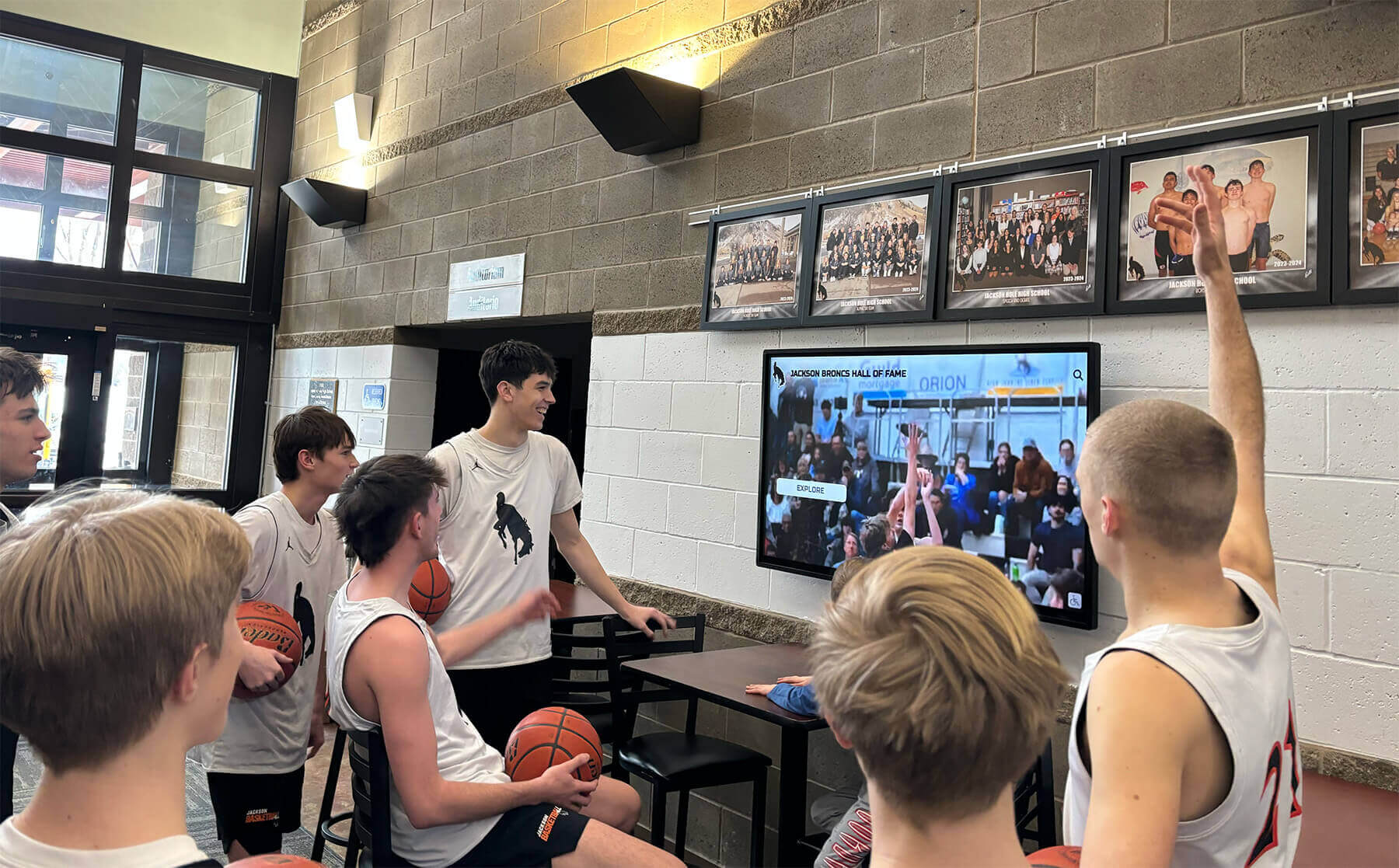
Detailed Statistics and Performance Data:
Digital platforms present comprehensive statistics through interactive visualizations:
- Individual player statistics with historical comparisons
- Team performance metrics and trends over seasons
- League and conference ranking context
- Development progression charts showing improvement
- Position-specific analytics appropriate to hockey evaluation
Photo Galleries:
Multiple images from practices, games, and team activities create visual narratives documenting entire seasons rather than relying on single team photos.
Audio Content:
Player and coach interviews provide perspectives impossible through text alone. Hearing athletes describe experiences in their own voices creates authentic connections that strengthen recognition impact.
This multimedia richness transforms recognition from simple acknowledgment into engaging storytelling that inspires current athletes while preserving memories for alumni. Programs can explore interactive touchscreen hall of fame installations that showcase these multimedia capabilities.
Web Accessibility Extends Recognition Reach
Physical displays restrict recognition to those physically present at schools. Families living at distance, alumni who moved away, and community members unable to visit campuses cannot access traditional recognition.
Interactive touchscreen systems typically include web accessibility, making JV hockey recognition available worldwide:
- Family viewing: Parents can explore their athletes’ achievements from home
- Alumni engagement: Former players can revisit their JV seasons from anywhere
- Recruiting showcasing: Prospective players and families can explore program culture online
- Social media sharing: Athletes can share specific achievements with extended networks
- Mobile compatibility: Recognition accessible on smartphones and tablets
This expanded accessibility amplifies recognition impact far beyond physical display locations while maintaining ongoing connections with broader hockey communities.
Strategic Placement and Design for Maximum Impact
Where and how JV hockey recognition appears significantly affects visibility, engagement, and cultural impact within programs.
Optimal Location Selection
JV recognition displays should occupy prominent locations signaling that all program levels matter:
Main Athletic Facility Entrances:
Position JV recognition displays near primary entrances to ice facilities or main athletic buildings where all athletes, families, and visitors naturally pass. This prominent placement communicates institutional priorities immediately upon arrival.
Rather than relegating JV recognition to secondary locations while varsity displays occupy prime spaces, position JV and varsity recognition side-by-side or in sequential locations. This equal placement signals equal program value across all competition levels.
Locker Room and Team Areas:
JV recognition displays in locker rooms or team gathering spaces provide daily exposure for athletes. These locations enable recognition to serve motivational functions, reminding players of program history, celebrating recent achievements, and reinforcing development pathways.
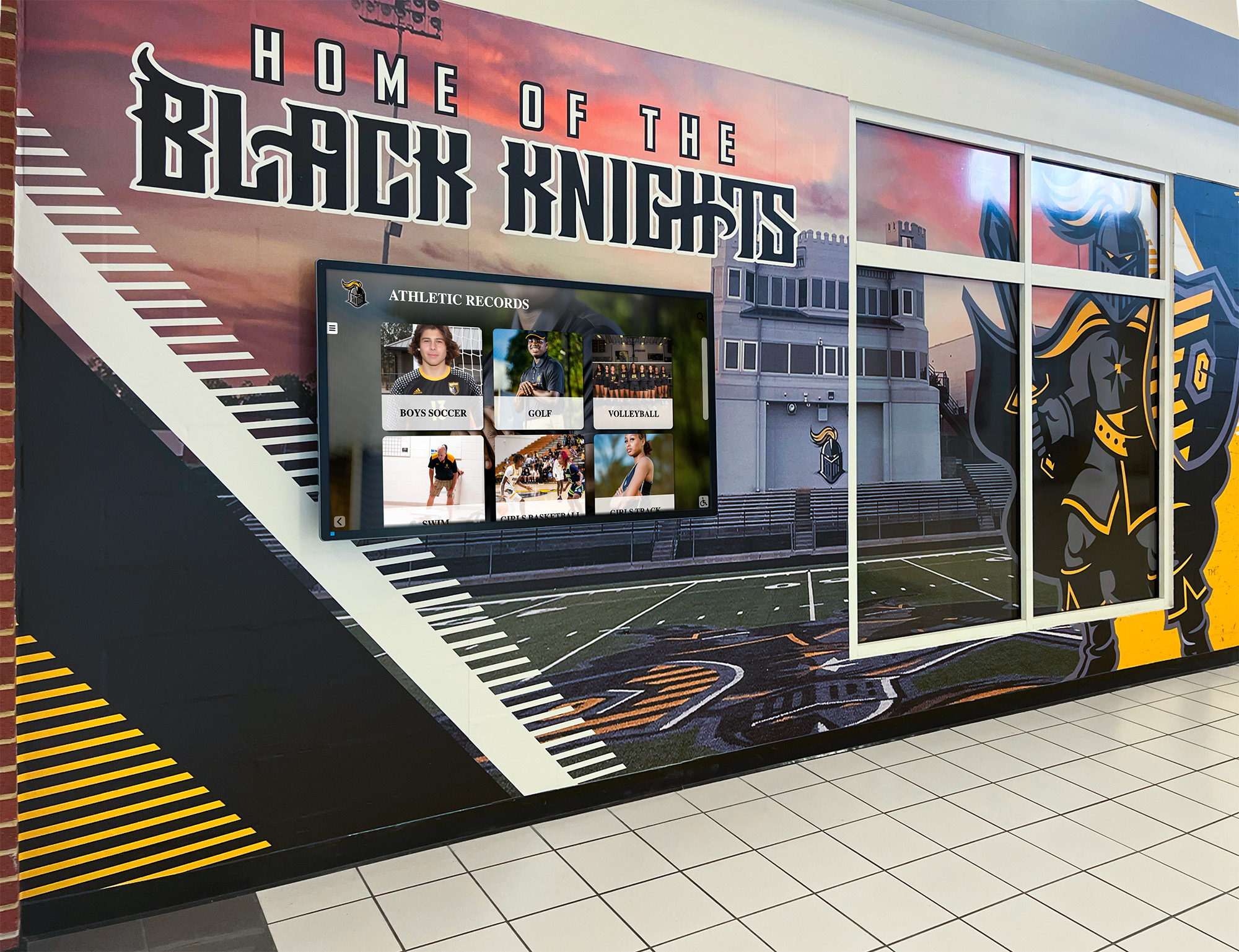
Main School Hallways:
Recognition displays in high-traffic school corridors ensure visibility beyond hockey-specific spaces. This broader exposure demonstrates school-wide athletic recognition while creating pride among entire student populations.
For schools considering placement strategies, examining best athletic facility additions provides guidance on recognition display integration within broader facility planning.
Integration with Comprehensive Athletic Recognition
Rather than creating isolated JV hockey displays, integrate JV recognition within comprehensive athletic recognition systems celebrating all sports and competition levels:
Multi-Level Recognition Architecture:
Digital platforms easily accommodate recognition across all program levels—varsity, JV, freshman teams, middle school programs—within unified systems. This integration creates cohesive athletic recognition rather than disconnected displays competing for attention.
Cross-Program Recognition:
Unified displays spanning multiple sports create opportunities to celebrate multi-sport athletes and demonstrate connections between different athletic programs, reinforcing that institutional athletic culture transcends individual teams.
Design Elements That Engage Young Athletes
JV athletes typically range from ages 14-17, requiring recognition design appealing to younger audiences while maintaining appropriate professionalism:
Visual Design Priorities:
- Dynamic graphics and motion attracting attention in busy environments
- Team colors and branding creating immediate program identification
- High-quality photos showcasing athletic action and team experiences
- Clear navigation enabling easy exploration without confusion
- Age-appropriate interfaces avoiding overly complex interactions
Content Organization:
Structure content to guide exploration logically:
- Featured content highlighting recent achievements or notable players
- Clear categories separating teams, individuals, seasons, and statistics
- Intuitive search and filtering enabling personalized discovery
- Progressive disclosure showing summary information initially with detailed content accessible through interaction
- Regular content rotation keeping displays fresh and encouraging repeat engagement
Implementation Best Practices for JV Hockey Recognition Programs
Successfully implementing JV hockey recognition requires systematic approaches addressing content development, technology selection, and ongoing management.
Content Development Workflow
Comprehensive JV recognition demands organized processes for gathering, organizing, and publishing content:
Season Planning:
Before seasons begin, establish systems for:
- Designating staff responsible for content collection and management
- Creating standard information forms coaches submit regularly
- Establishing photography and videography protocols
- Setting timelines for content development and publication
- Training multiple administrators preventing single-point dependencies
Ongoing Documentation:
Throughout seasons, systematically collect:
- Player biographical information and photos
- Game statistics and performance data
- Photos and videos from games and practices
- Coach observations about player development
- Player reflections and testimonials
- Team achievement milestones and memorable moments
Post-Season Compilation:
After season completion, compile comprehensive documentation:
- Final statistics and performance summaries
- Season narrative highlighting key moments
- Player awards and recognition
- Team achievements and records
- Looking-ahead content about next season expectations
This systematic approach ensures complete documentation while distributing work across entire seasons rather than creating overwhelming post-season demands.
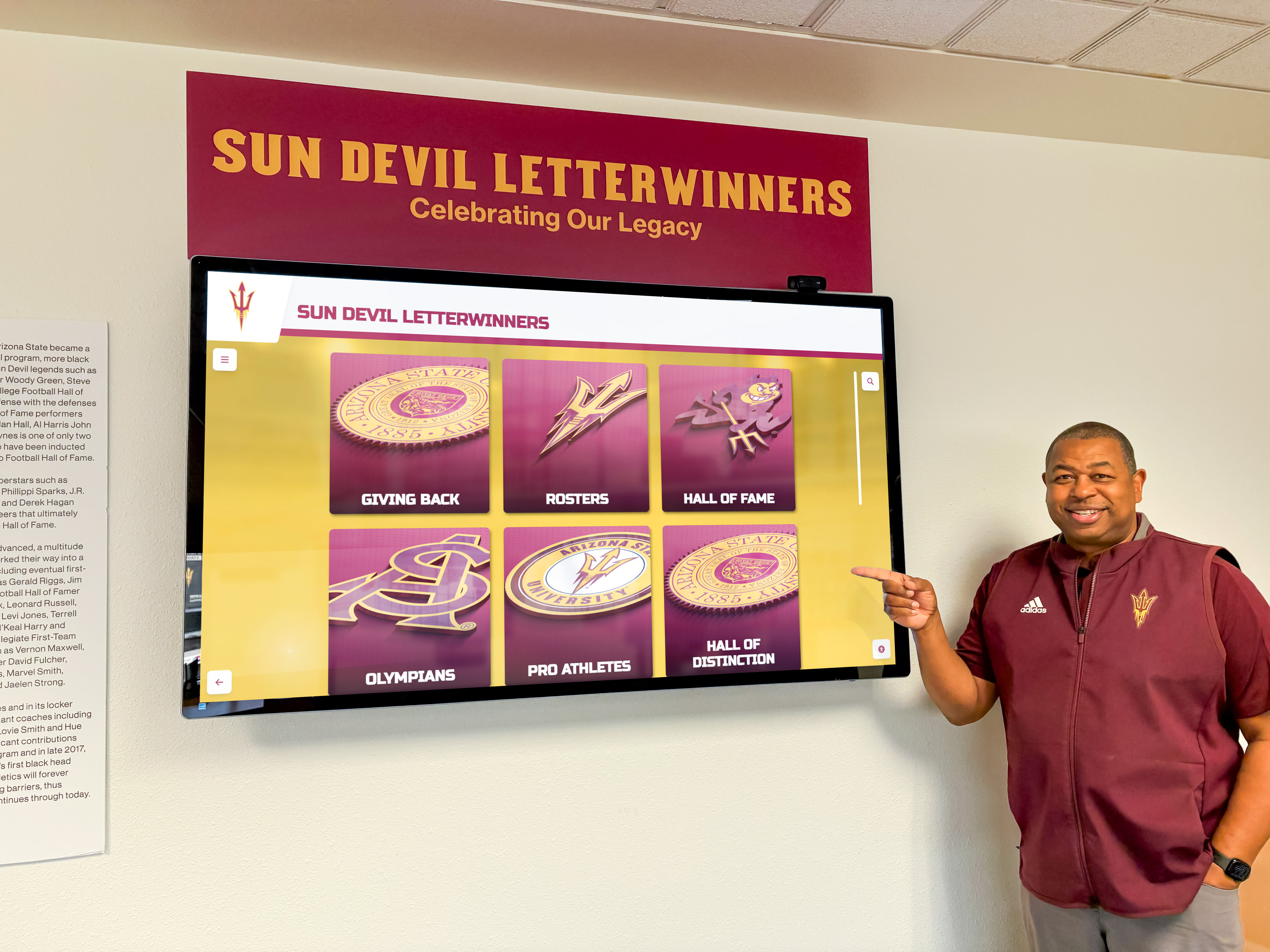
Phased Implementation Approach
Schools new to comprehensive JV recognition might implement gradually:
Phase One: Current Season Focus (Year 1)
Begin by thoroughly documenting current JV season:
- Complete roster with player profiles
- Regular game highlights and updates
- End-of-season comprehensive documentation
- Basic historical information establishing baseline
Phase Two: Recent History Addition (Year 2)
Expand to include recent seasons:
- Previous 2-3 seasons with rosters and statistics
- Significant achievements and milestones
- Notable player development stories
- Championship or conference success documentation
Phase Three: Comprehensive Archives (Year 3+)
Build complete historical records:
- Systematic documentation of historical seasons
- Alumni contribution of historical information
- Research of program records and archives
- Continuous updates as new information emerges
This phased approach delivers immediate value while building toward comprehensive recognition without overwhelming available resources.
Technology Platform Selection
Choosing appropriate technology significantly impacts long-term success:
Hardware Considerations:
- Display size: 55-65 inch screens typical for most applications
- Touchscreen capability: Interactive features versus passive display
- Commercial-grade quality: Consumer equipment inadequate for continuous institutional use
- Mounting options: Wall-mounted, kiosk, or integrated into existing displays
- Durability: Impact-resistant in high-traffic youth environments
Software Requirements:
Essential capabilities for JV hockey recognition:
- Intuitive content management requiring no technical expertise
- Robust search and filtering functionality
- Multimedia support (photos, videos, statistics)
- Flexible organizational structures accommodating multiple teams and seasons
- Web companion platforms extending recognition online
- Analytics tracking engagement and usage patterns
- Automatic backups protecting content investment
Purpose-built platforms like those from Rocket Alumni Solutions provide specialized features designed specifically for athletic recognition that generic systems cannot efficiently replicate.
Measuring Recognition Program Success and Impact
Effective JV recognition programs assess impact through multiple metrics demonstrating value and informing continuous improvement.
Quantitative Success Indicators
Measurable data demonstrating recognition program effectiveness:
For Digital Displays:
- Unique visitors and interaction counts over time periods
- Average session duration indicating engagement depth
- Content categories receiving most attention
- Search queries revealing visitor interests
- Return visitor rates showing sustained engagement
- Web platform traffic and remote viewing statistics
For All Recognition Types:
- Player retention rates from JV through graduation
- Survey responses about athlete satisfaction and program culture
- Family feedback about recognition adequacy
- Prospective player mentions during recruitment
- Alumni engagement with JV recognition content
Qualitative Impact Assessment
Numbers alone don’t capture full recognition value:
Athlete Perspectives:
- Confidence levels and self-perception changes
- Motivation to continue skill development
- Understanding of pathways to varsity success
- Feelings of belonging and program appreciation
- Specific memories created through recognition
Coach Observations:
- Team cohesion and chemistry improvements
- Practice effort and training commitment
- Responsiveness to coaching and feedback
- Excitement about program participation
- Reduced attrition and improved retention
Family Feedback:
- Parent satisfaction with JV program experience
- Appreciation for recognition of younger players
- Likelihood of recommending program to others
- Willingness to support program through volunteering or donations
- Social media sharing and community promotion
Return on Investment Considerations
Calculating comprehensive ROI encompasses multiple benefit dimensions:
Financial Factors:
- Initial investment versus traditional recognition costs over time
- Eliminated ongoing expenses for printed materials and physical updates
- Player retention value (tuition implications for private schools)
- Fundraising success attributable to enhanced program perception
Strategic Value:
- Stronger program culture and team identity
- Improved player development and varsity preparation
- Enhanced recruitment appeal and competitive positioning
- Preserved institutional history and memory
- Alumni engagement and long-term program connections
Most programs discover that thoughtfully implemented JV recognition delivers returns far exceeding initial investment when accounting for comprehensive benefits across player development, program culture, retention, and competitive success.
Common Challenges and Practical Solutions
Schools implementing JV hockey recognition encounter predictable obstacles requiring proactive strategies:
Challenge: Distinguishing JV Recognition While Maintaining Appropriate Hierarchy
Issue: Programs want to celebrate JV achievements appropriately without diminishing varsity accomplishment significance or creating confusion about competition level differences.
Solutions:
- Use clear labeling and design elements differentiating program levels
- Focus JV recognition on development and improvement rather than championship competition
- Celebrate JV-specific achievements (improvement awards, development milestones) alongside traditional honors
- Present JV and varsity recognition as complementary parts of unified program stories
- Emphasize developmental progression from JV to varsity in storytelling
- Maintain appropriate scale and scope distinctions while ensuring quality recognition
This approach celebrates JV achievements authentically while preserving varsity accomplishments’ special significance.
Challenge: Limited Historical Information About Past JV Teams
Issue: Many schools lack comprehensive records for older JV seasons—missing rosters, statistics, photos, or achievement documentation.
Solutions:
- Prioritize current and recent seasons with available documentation
- Conduct systematic research through yearbooks and archived materials
- Engage alumni in supplying missing information through outreach campaigns
- Accept initial gaps honestly rather than fabricating information
- Build archives incrementally as historical information emerges
- Focus on creating comprehensive documentation moving forward
Digital platforms make updates easy as historical research uncovers previously unknown information, unlike physical displays requiring reconstruction.
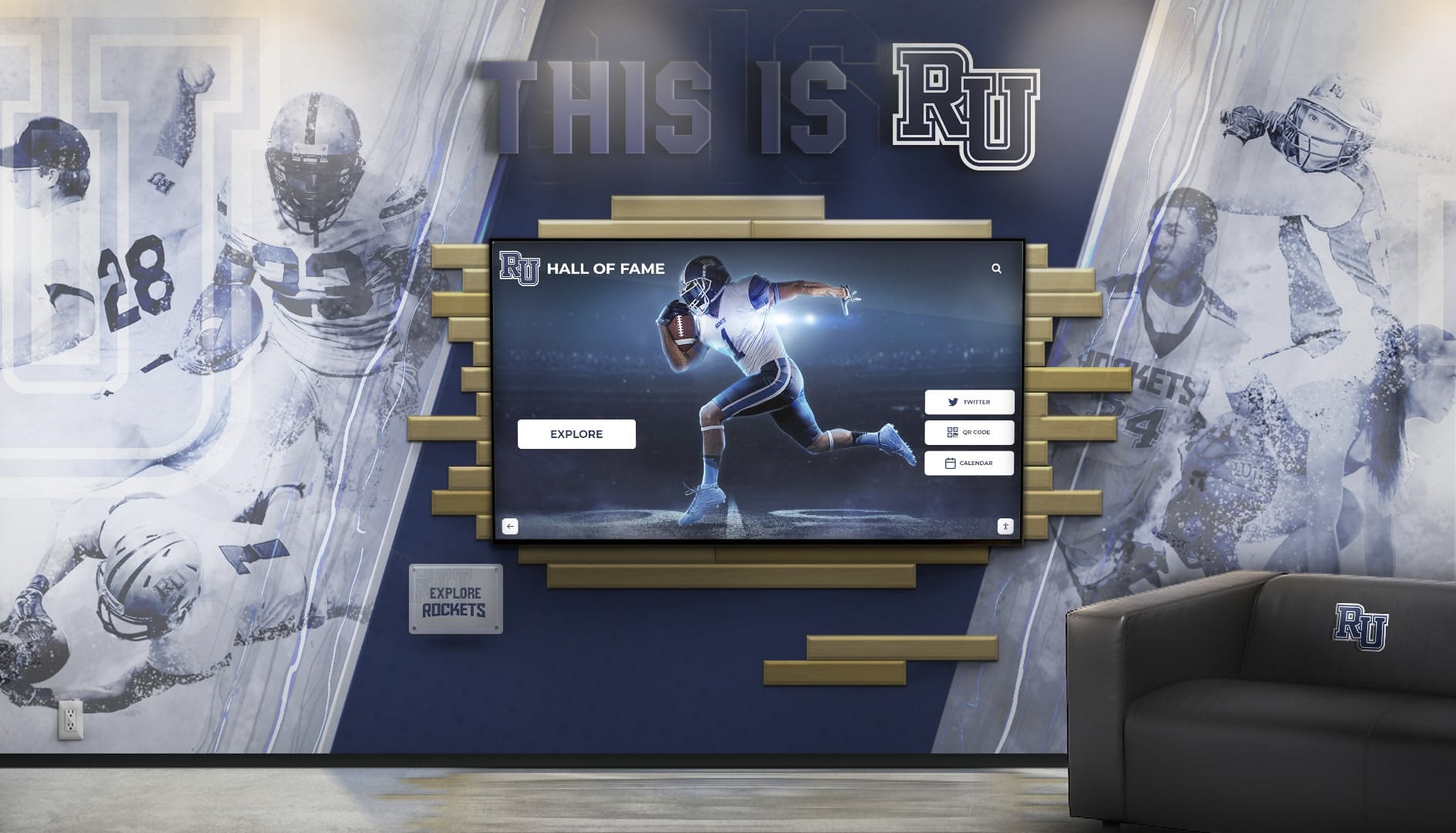
Challenge: Sustaining Content Updates Across Multiple Seasons
Issue: Initial enthusiasm produces comprehensive first-season documentation, but subsequent seasons receive inconsistent attention as competing priorities emerge.
Solutions:
- Assign clear responsibility for JV content to specific staff members
- Integrate updates into existing season-end workflows
- Create simple submission processes minimizing coach burden
- Establish automated reminders and deadlines for content submission
- Train multiple administrators preventing single-point failure
- Use content management platforms enabling quick, easy updates
- Celebrate recognition program maintenance as valuable program contribution
Sustainable processes prevent displays from becoming outdated and losing effectiveness.
Challenge: Budget Constraints and Cost Justification
Issue: Athletic budgets face numerous competing demands, making additional JV recognition investment difficult to justify.
Solutions:
- Calculate total cost of ownership comparing digital versus traditional recognition long-term
- Identify potential funding sources beyond athletic budgets (booster clubs, parent associations, alumni donations)
- Consider recognition investment as retention strategy reducing player attrition costs
- Implement phased approach spreading investment across multiple budget cycles
- Combine JV recognition with comprehensive athletic recognition systems maximizing efficiency
- Present recognition as recruiting and program development investment rather than simple expense
Many programs discover that recognition investment pays for itself through improved retention and enhanced program culture.
Conclusion: Building Stronger Hockey Programs Through Comprehensive Recognition
Junior Varsity hockey recognition represents far more than participation trophies or token acknowledgment. Comprehensive JV recognition creates environments where developing athletes feel valued, see clear pathways to success, and remain committed through challenging developmental periods. These programs build depth that translates into varsity competitive success while creating cultures where athletes support each other across all program levels.
Interactive touchscreen technology revolutionizes what’s possible for JV recognition by eliminating space constraints that previously forced minimal JV acknowledgment, enabling multimedia storytelling bringing athletic experiences to life, providing searchable archives making historical information accessible and useful, simplifying content management allowing regular updates without technical expertise, and extending recognition reach through web accessibility that engages families and alumni worldwide.
The most successful high school hockey programs recognize that varsity championships build upon strong JV foundations. Every varsity star began as a developing player learning systems, building skills, and growing confidence through competitive experience. How programs treat athletes during these developmental years directly impacts whether they remain committed long enough to reach their potential.
Schools implementing comprehensive JV hockey recognition typically experience higher player retention rates through developmental years, stronger program culture built on mutual respect and support, smoother JV-to-varsity transitions as expectations and pathways become clear, enhanced recruitment appeal from demonstrable commitment to all athletes, and improved long-term competitive success as program depth strengthens.
Ready to transform how your hockey program recognizes Junior Varsity athletes? Explore comprehensive digital recognition display solutions designed specifically for multi-level athletic programs. Discover how interactive halls of fame create engagement opportunities celebrating achievements across all competition levels. Learn about implementing budget-friendly digital recognition that makes comprehensive JV celebration feasible regardless of program budget constraints.
Junior Varsity hockey players invest tremendous effort developing skills that will serve them throughout their athletic careers and lives. They deserve recognition matching the significance of their commitment. With thoughtful planning, appropriate technology selection, and dedication to ongoing excellence, your JV hockey recognition program can become a cornerstone of program culture—honoring developmental achievements while inspiring future varsity champions.
